The repair and restoration of a YAESU FL-2100Z Amplifier

Earlier this year I was given a Yaesu FL-2100Z vacuum tube amplifier. Overall it looked pretty rough, the paint was already very scuffed and the tubes blew up before it was finally handed to me. I thought that repairing this amplifier would be a nice project for me as I’ve never worked with vacuum tubes before and if I end up being successful it would result in a cheap way of entering the world of QRO. The whole process took me nearly a year as I could only work on this amplifier in my spare time and in between waiting for new parts to arrive.
The grid and bias circuit:
The initial step in the repair of this amplifier was to check what else beside the 572B vacuum tubes failed when it blew up. The first thing I found was a pair of blown grid resistors and a burnt grid choke coil (L3 on the schematic).
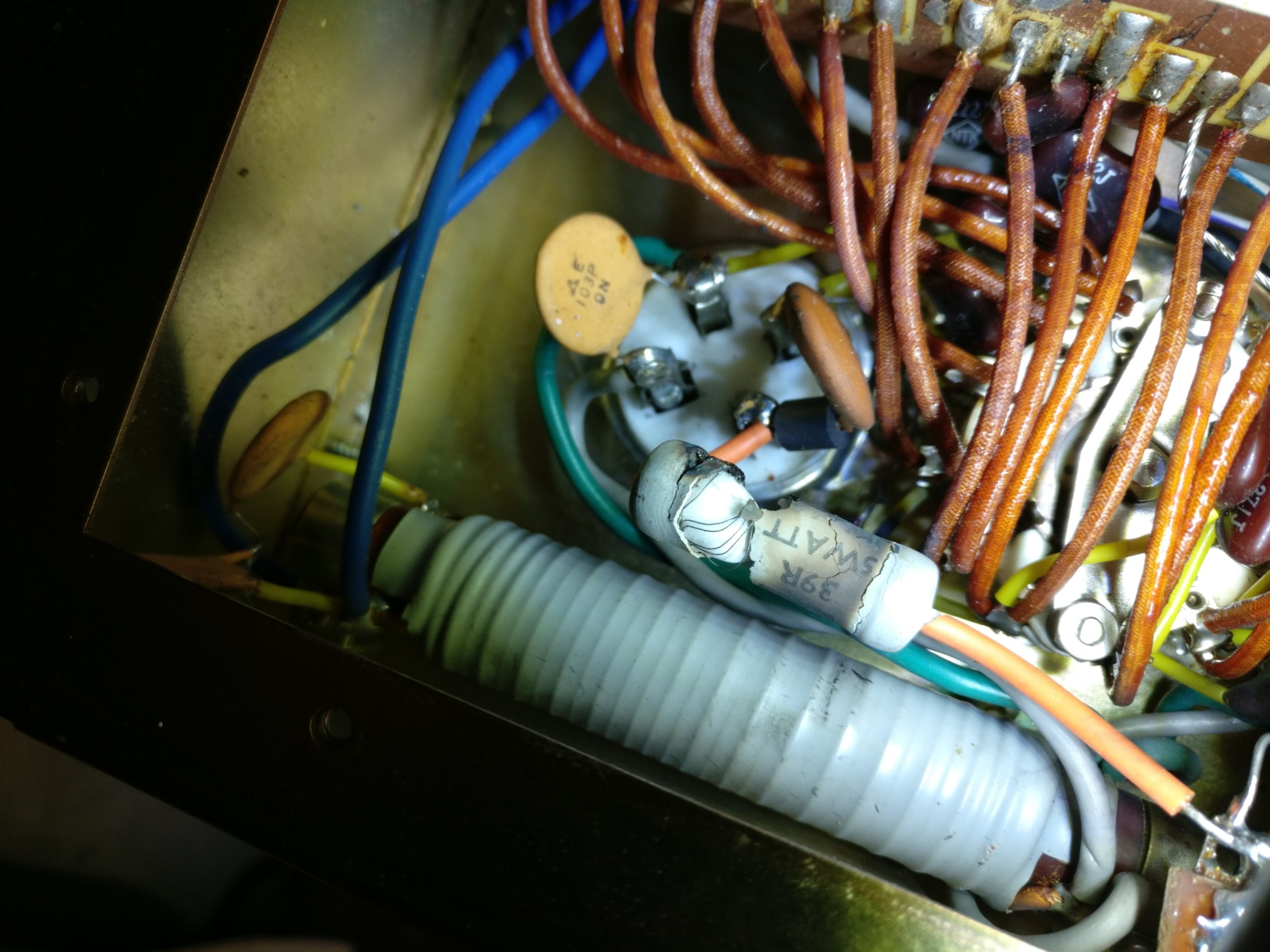
One of the blown grid resistors (they failed on both sides). I replaced those with some 3W 39 Ohm resistors.
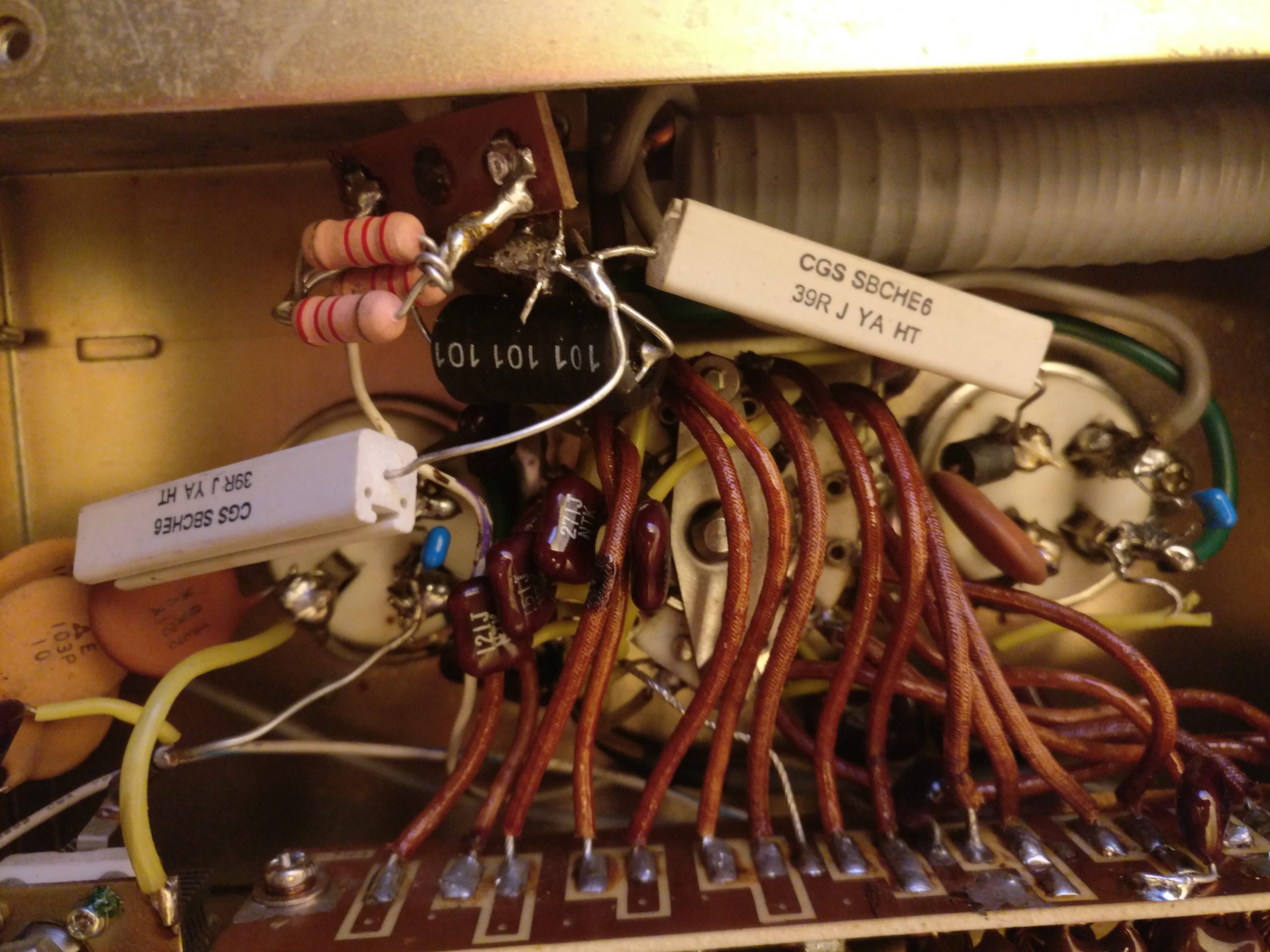
The burnt grid choke (top) and its replacement (bottom). I used a 100uH coil (part number 5900-101-RC) to replace the original one.
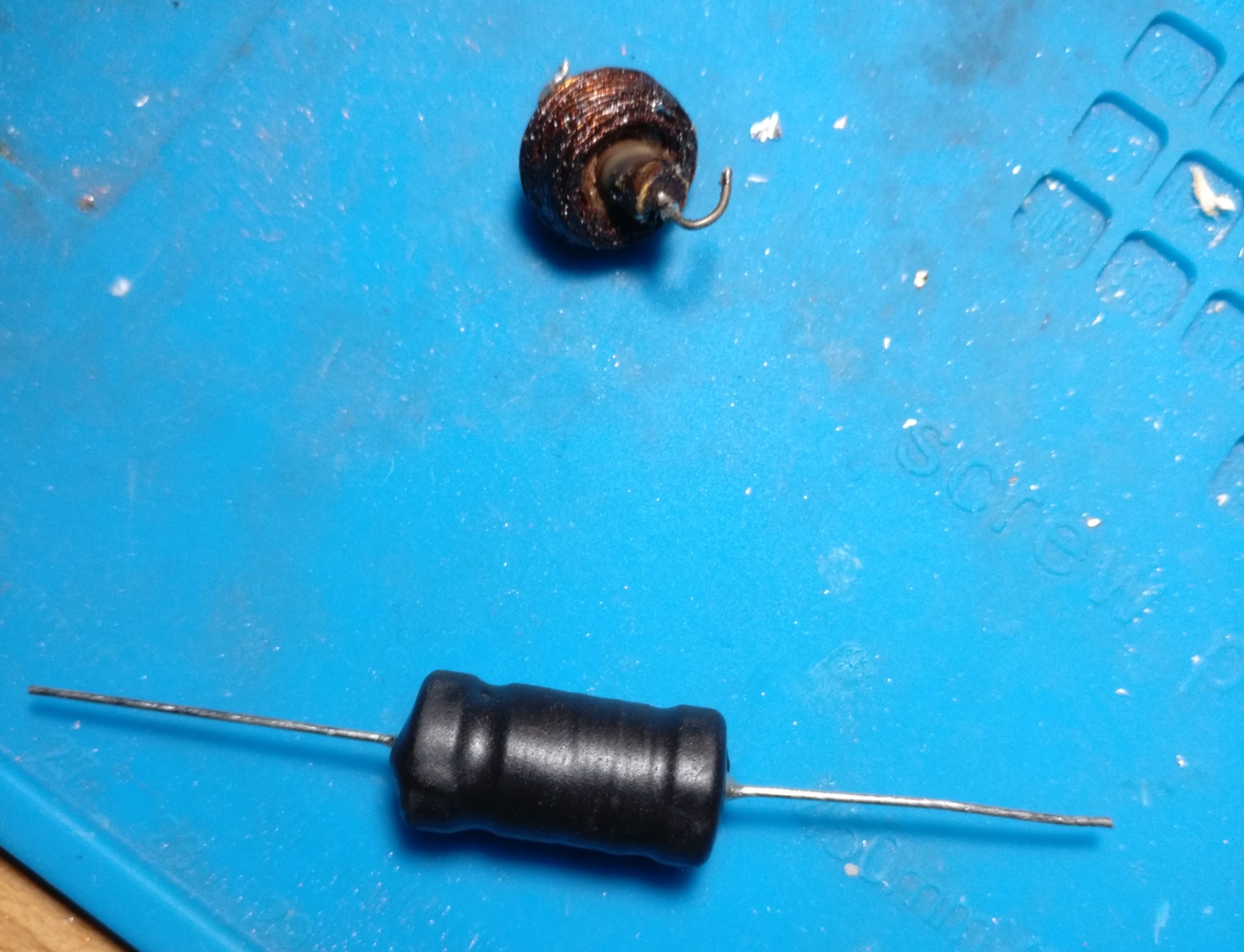
Next I checked the Bias Control Board (PB-1903 on the schematic). This board ended up having a lot of damaged components, mostly some blown diodes and resistors. Even the little switching relay was burned out. After checking all the components on that board I decided it would be best to replace every single one on it. Pretty much all the non-critical components such as the resistors and capacitors are easy to get, for the 10D1 and 10D10 diodes I used the 1N5408. The closest match for the relay I found is the Fujitsu SY-12-K. It’s a nearly perfect fit for the original PCB but you will still have to make a little extension for four of the legs because it is a little smaller than the original one.
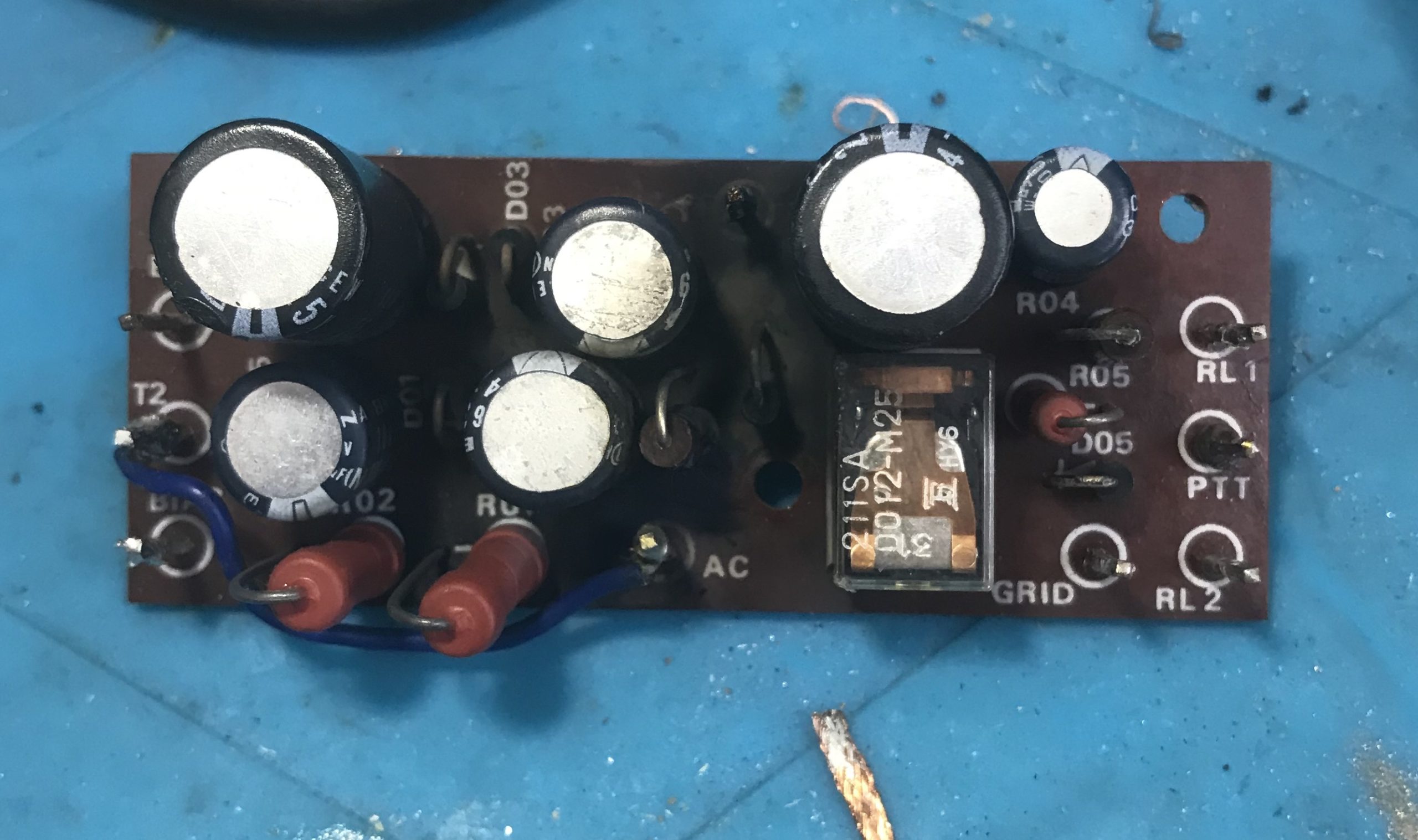
There are quite a few blown resistors and diodes (as can be seen by the black residue on the PCB).
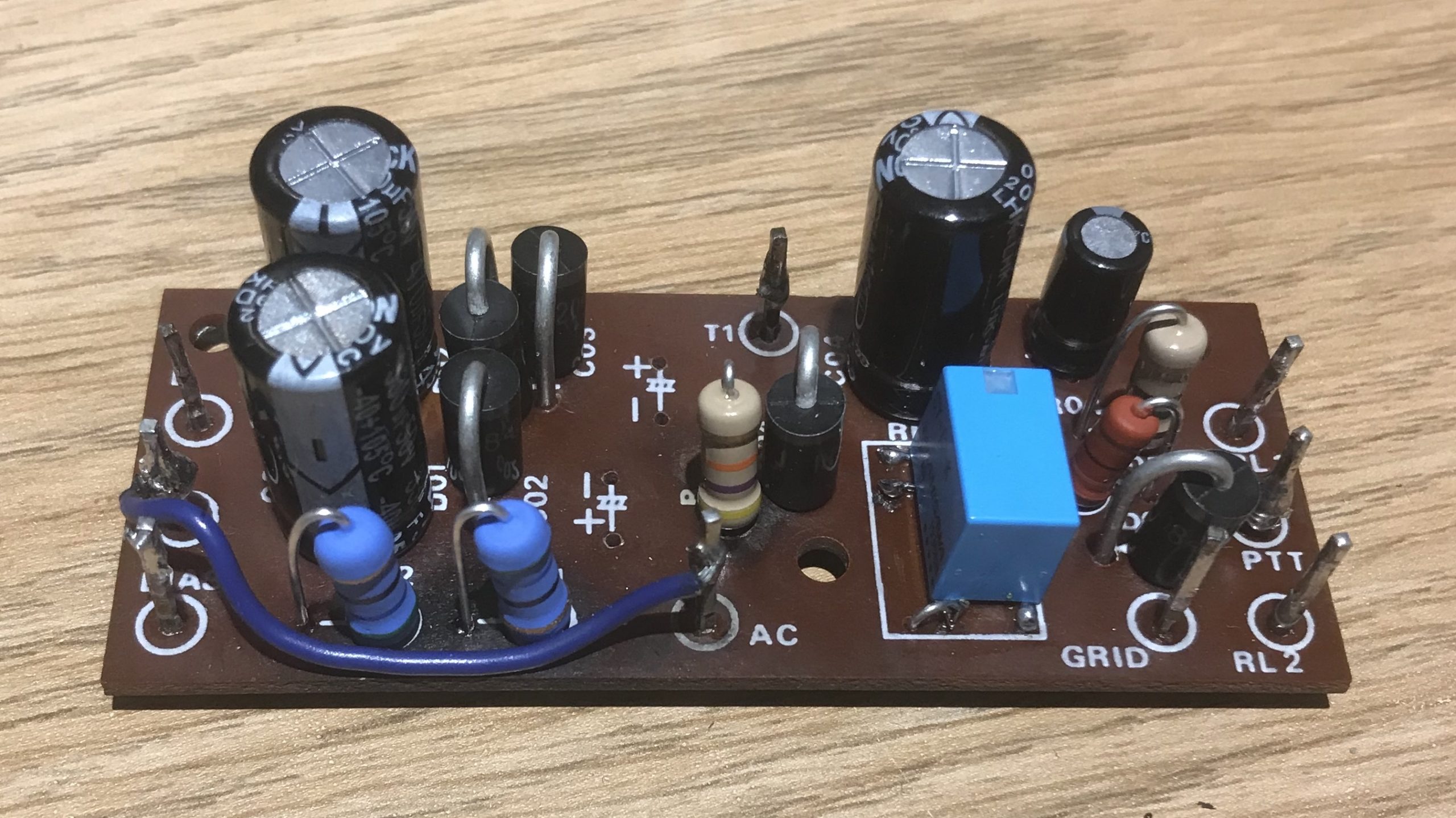
This is what the PCB looks like after cleaning and replacing all the components on it. Spot the little extension legs for the relay.
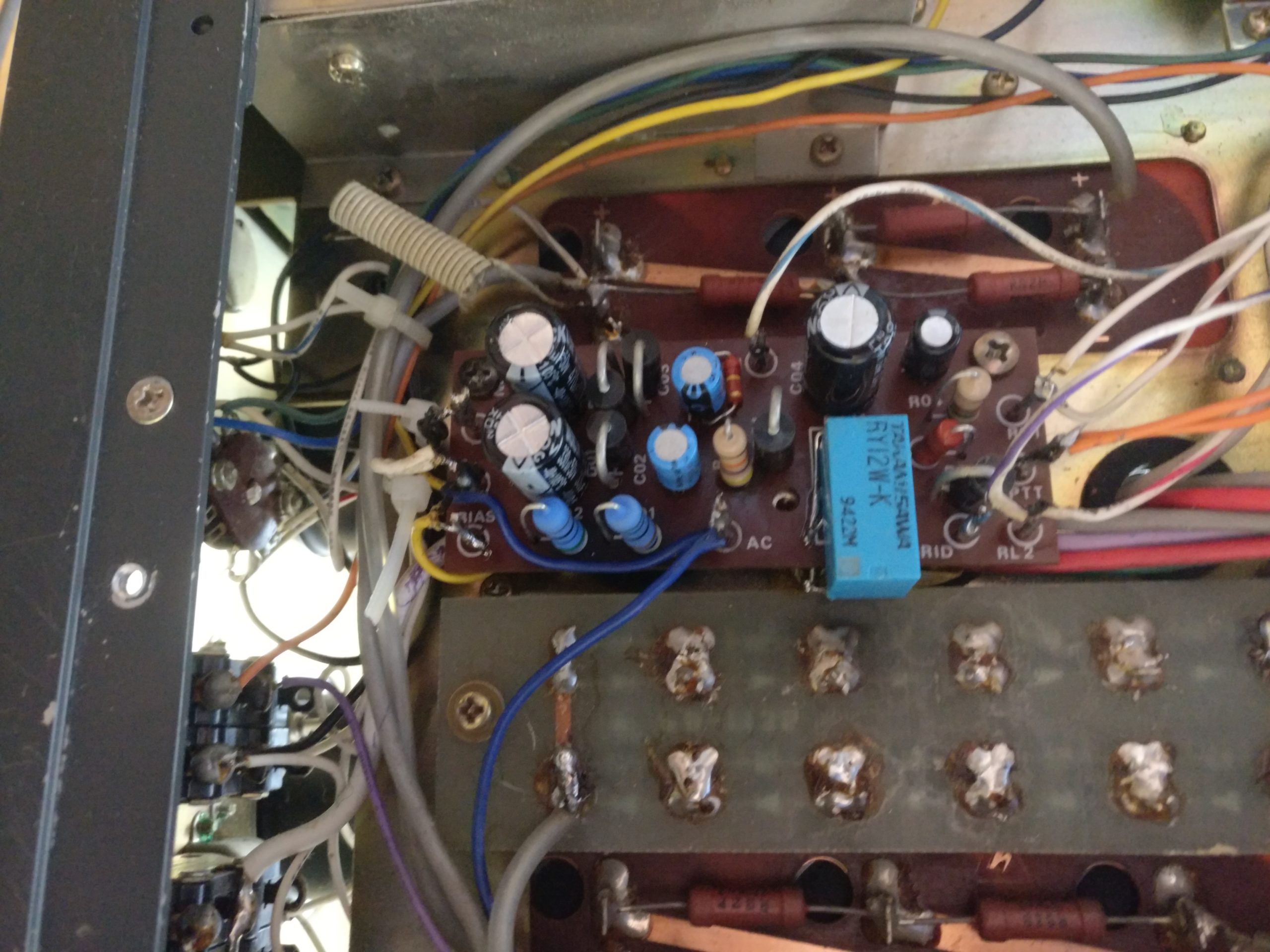
The high voltage RF choke:
Next I opened the RF compartment. After removing both of the blown 572B tubes I noticed that the main RF choke (L1 on the schematic) had quite a few burn marks on it.
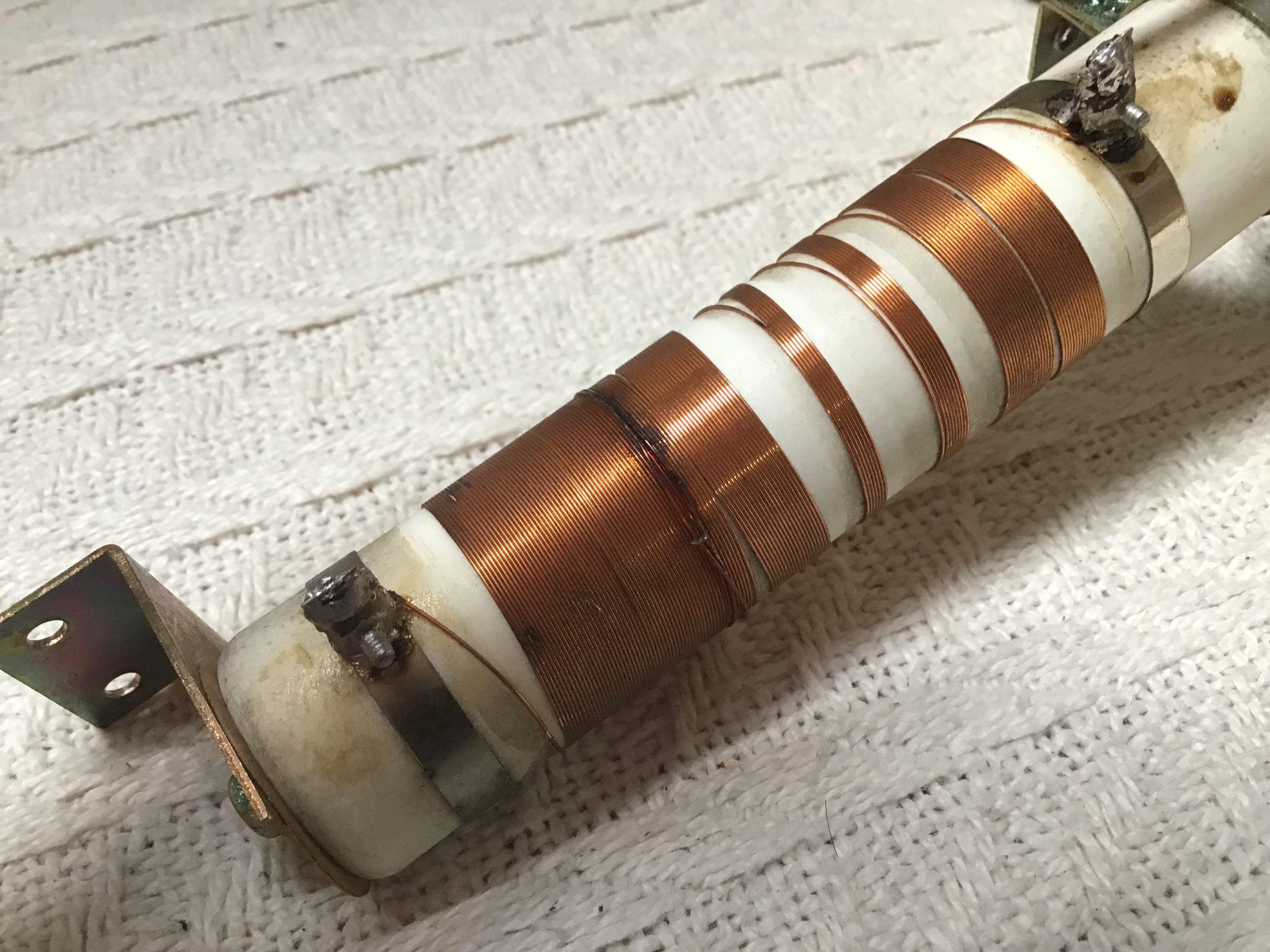
The coil still measured for continuity but I decided it would be best to completely replace it. It is also possible to remove the old windings and rewinding the coil on the old former. In my case I chose to recreate a choke from scratch. To accomplish that I bought a 25mm teflon rod (130mm length) which I covered in some heatshrink to prevent the wire from slipping too much.
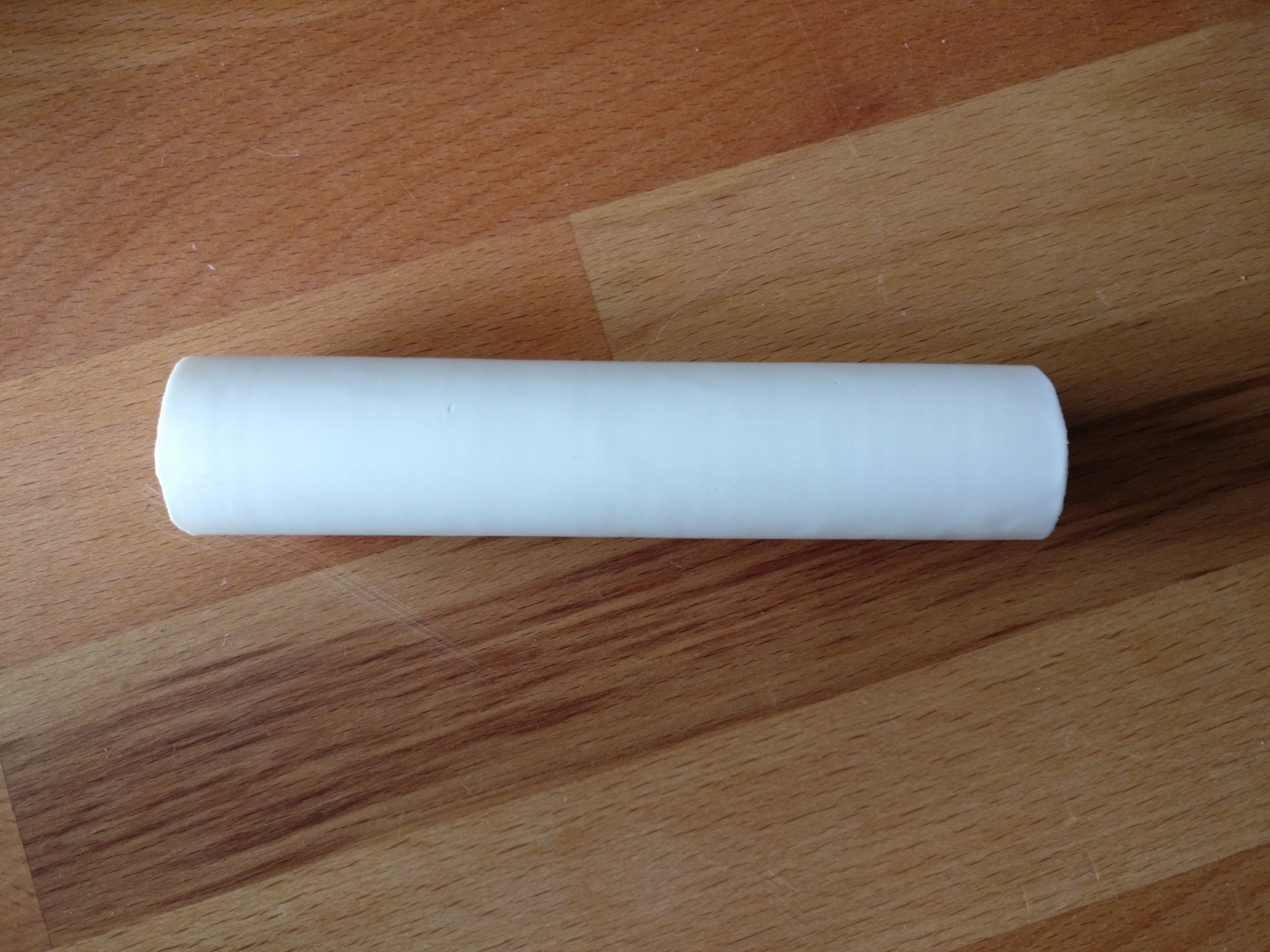
A 130mm length of 25mm outer diameter teflon rod covered in a white piece of heatshrink.
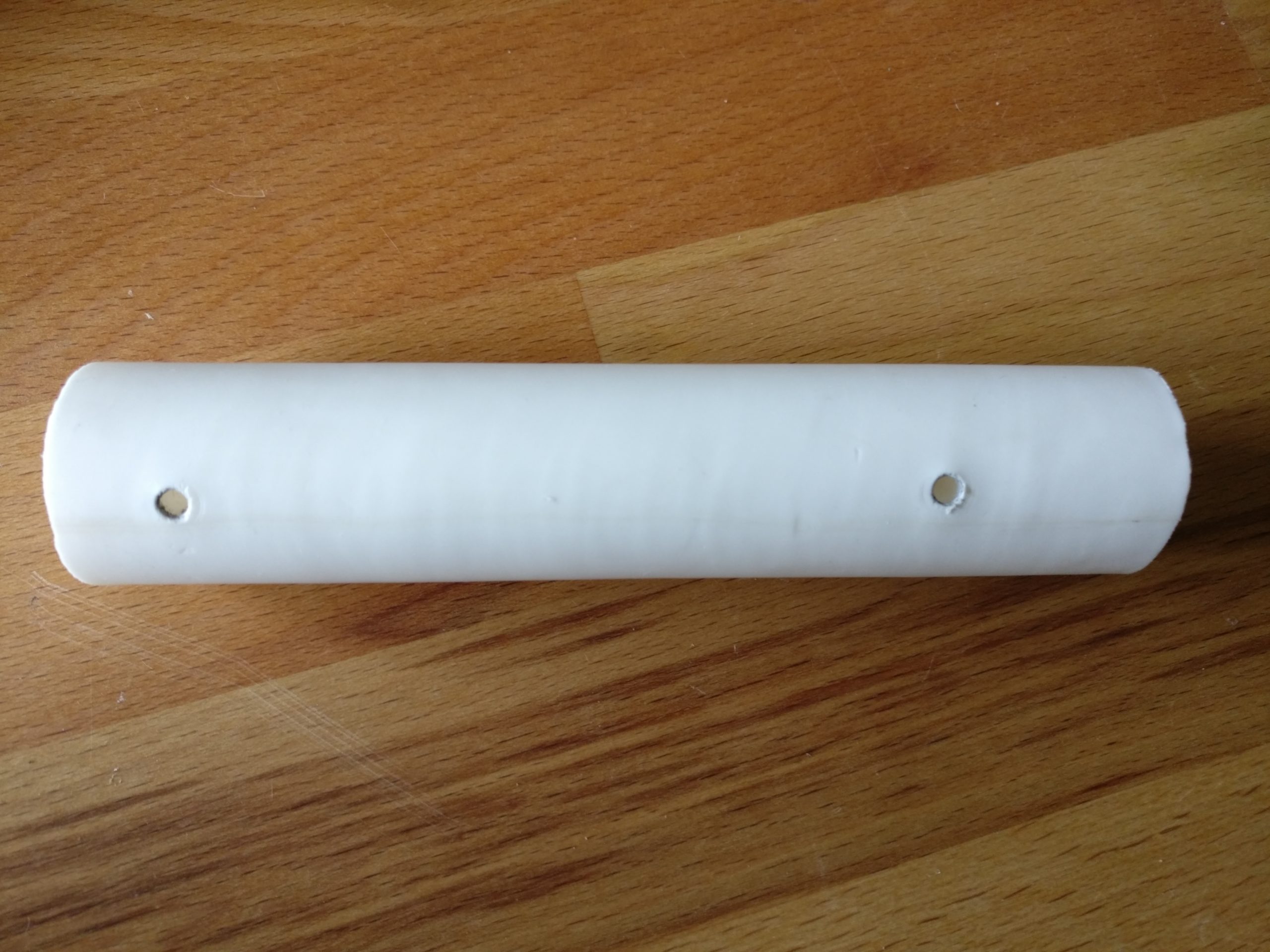
Next I drilled a couple of holes to mount some M4 bolts. The exact distance of the holes from the beginning and end of the rod was taken from the original choke.

I used some 1.5mm2 solid copper wire to create these little hooks which screw onto the teflon rod. The hole diameter is around 4mm so that an M4 bolt fits snuggly through it.
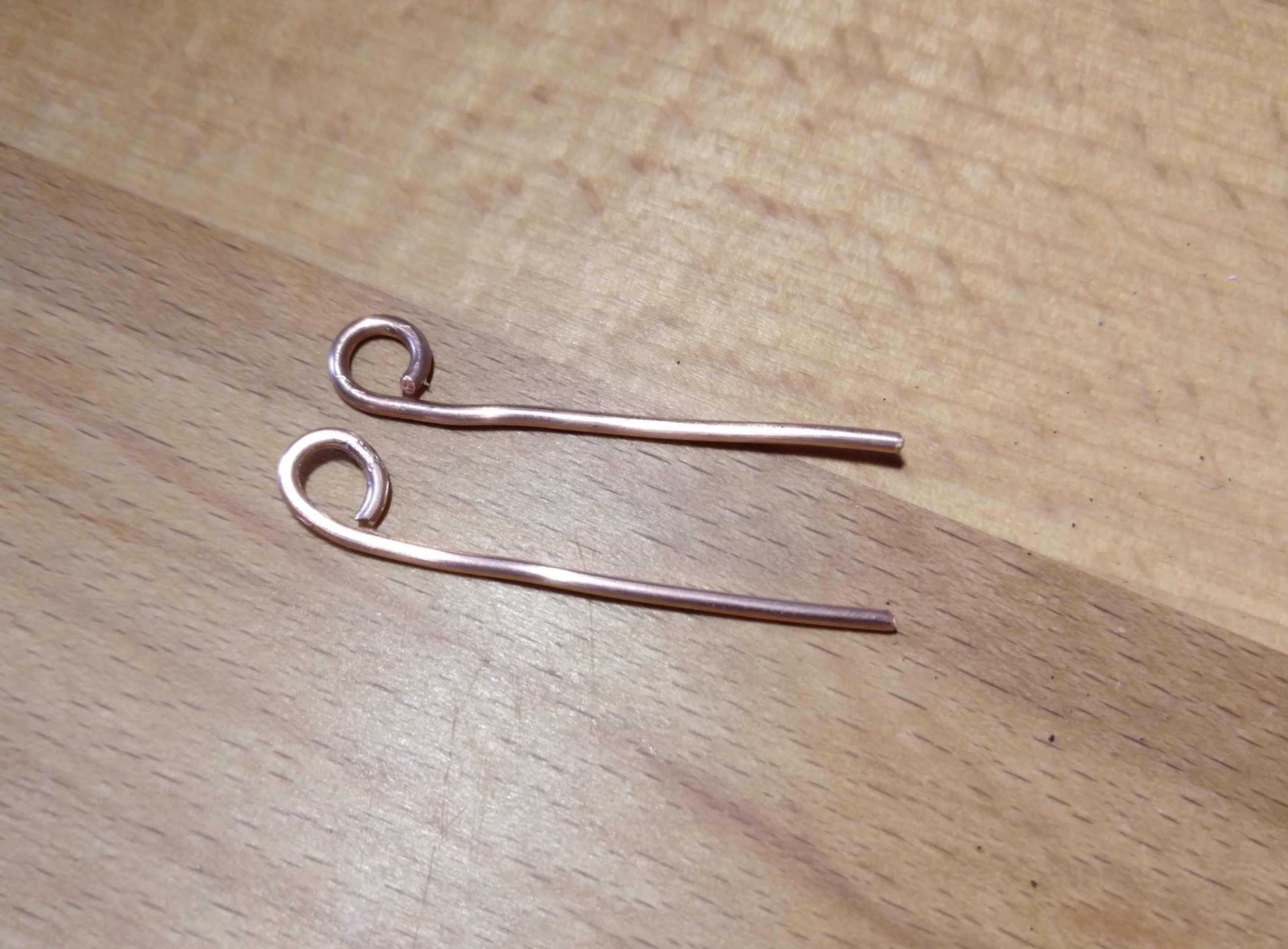
These will be the main solder leads for the whole coil.
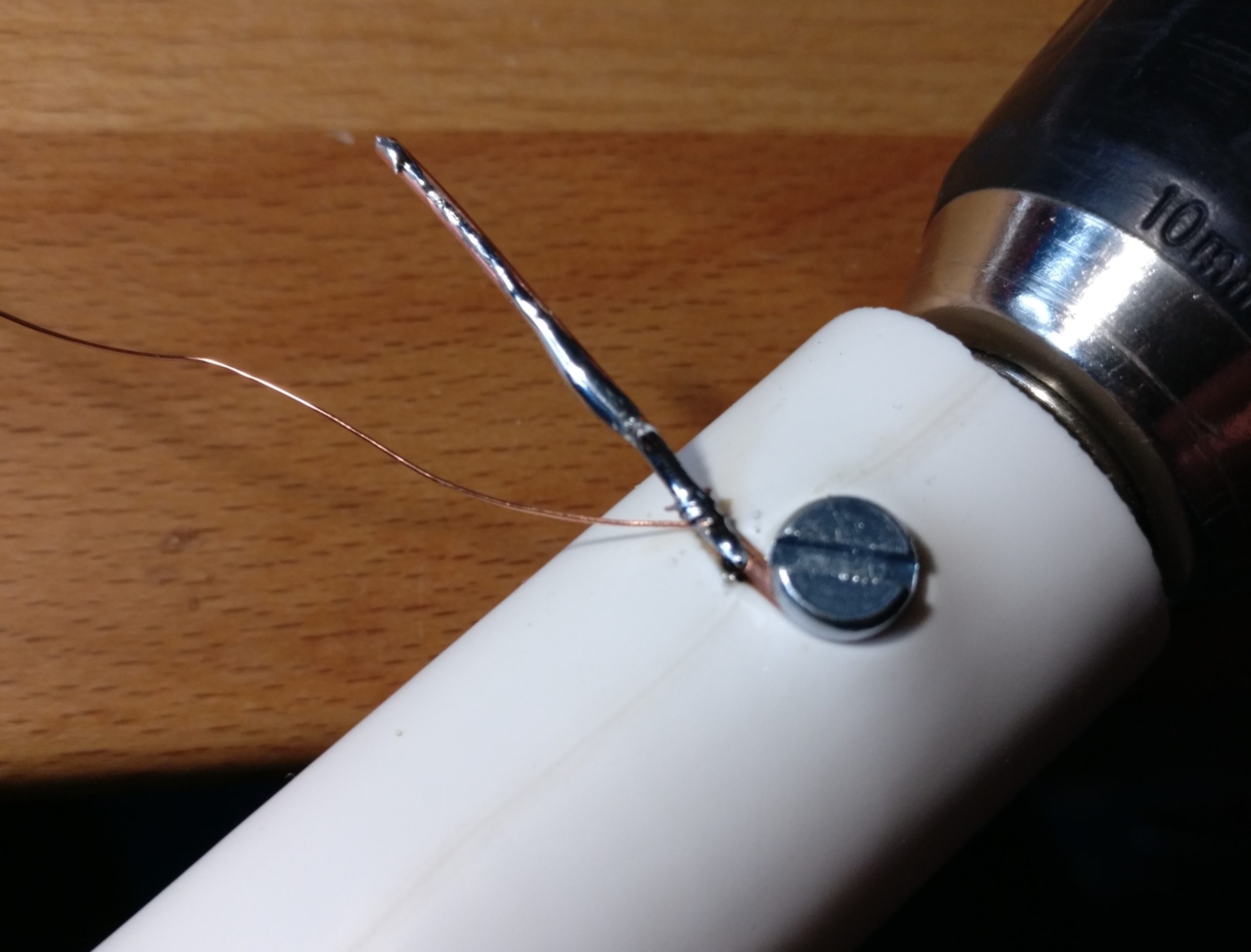
I attached the 0.3mm enameled copper wire by twisting it around the first copper hook and then soldering it into place. This way it doesn’t come off when you try to solder the HV wires in the amplifier to it.
The coil has a number of gaps along the way. These gaps are put into place to avoid self resonance on some frequencies. You should be able to take the number of windings and the size of the gap from your original choke.
In the case of my FL-2100Z choke the gap was around 8 – 10 mm. I found that the number of turns isn’t too critical because I accidentally added a couple of turns too much in some sections. Yet the coil still performs just fine.
From left to right I counted (in sections) 16 -> 16 -> 8 -> 6 -> 20 -> 62 windings.
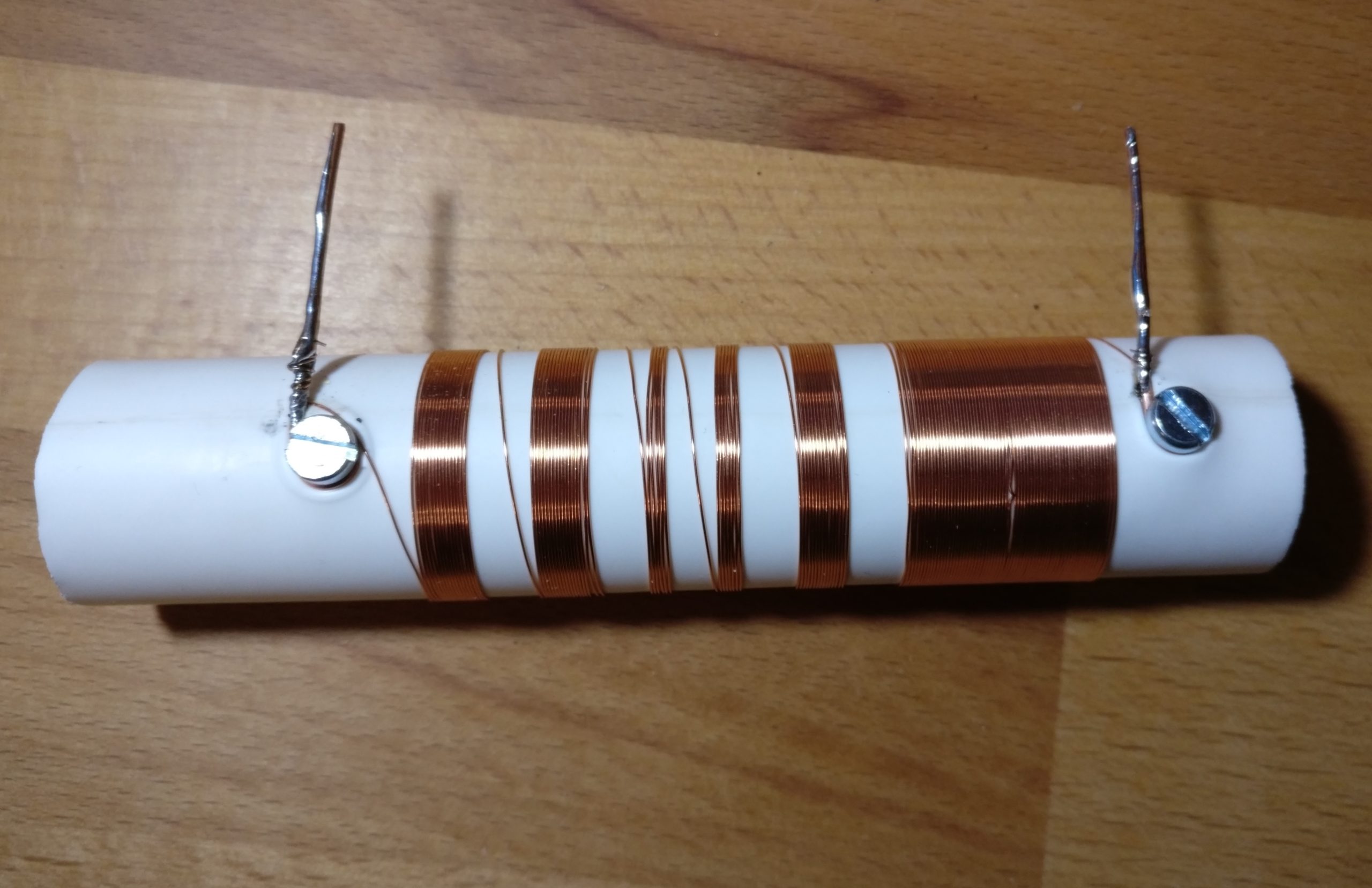
The windings didn’t turn out perfectly everywhere but that doesn’t really seem to matter that much. The coil measures an inductance of around 170uH. I also measured if the coil is self-resonant inside of any amateur bands with a VNA. It seems to have a slight indication around 16MHz which is still very far away from the 20m and 17m bands. I later checked for self-oscillations when it was mounted in the amplifier and it’s very stable.
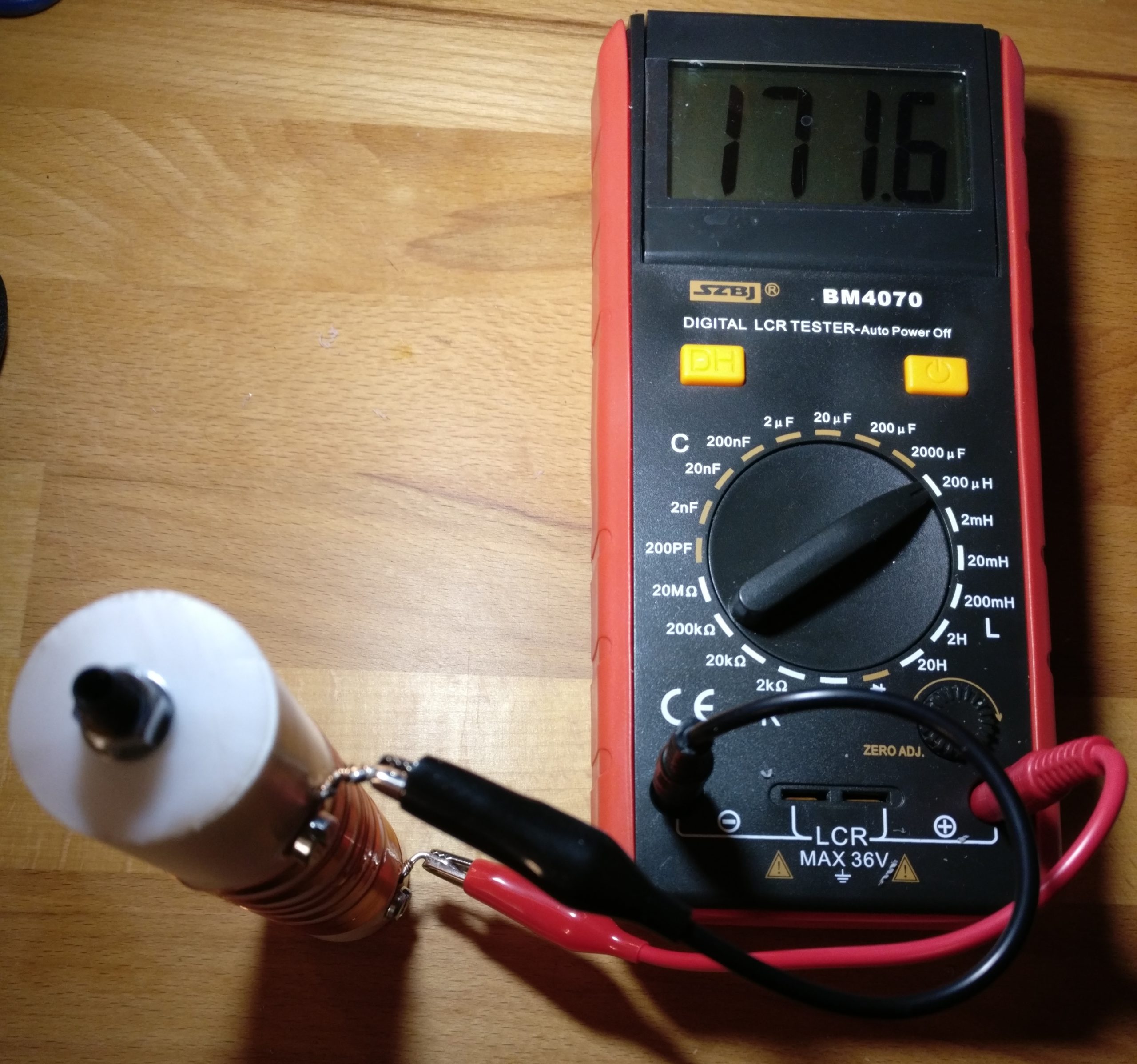
Finally, I also drilled and tapped a mounting hole on each side of the teflon rod. I removed the mounting bracket from the old choke (which is also using an M4 bolt) and screwed that into my new choke. On the other side where the anode DC blocking capacitor mounts I went with an M5 hole. The reason I went with M5 instead of the orignal M4 is because I had to replace the anode capacitor (C30 on the schematic) with a Russian surplus unit which uses an M5 thread.

Whilst replacing the choke I noticed that the VHF damping resistors (R6 and R9 on the schematic) looked very discolored and burnt. I also replaced those with some new 3W 22 Ohm metal film resistors.
The HV doorknob capacitors:
Finding a replacement for the anode DC blocking capacitor proved to be a little bit of a challenge due to the size limitations. The best one I was able to find is a 2200pF 10KV Russian doorknob capacitor which has a diameter of 40mm. Any larger than that and it would not be possible to mount it behind the choke because it would interfere with the band switch rod.
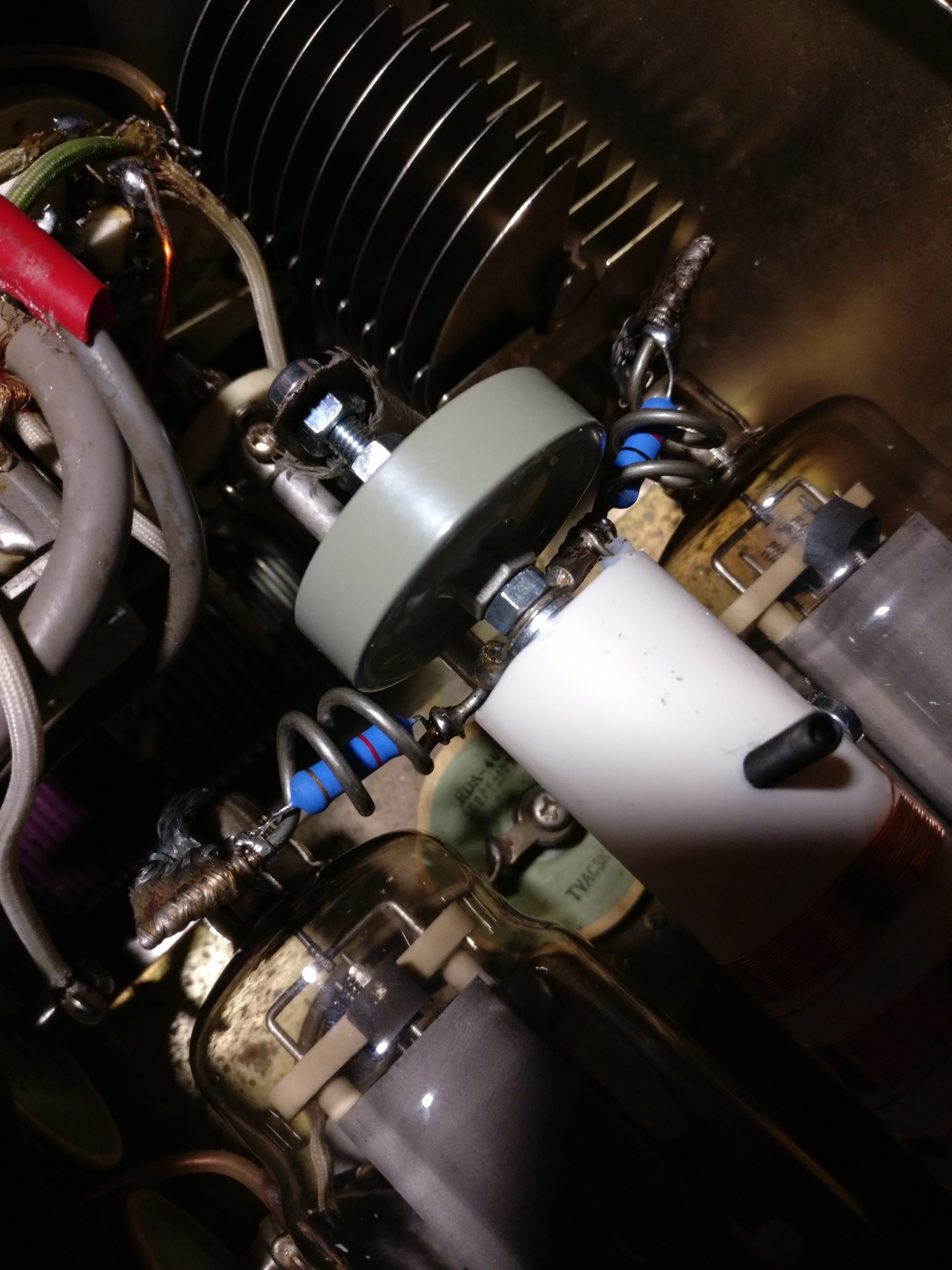
After replacing the anode DC blocking capacitor I went ahead and also checked all the other doorknob capacitors in the amplifier. I removed every single one and measured it on my LCR meter. Turns out the anode capacitor was the only one that got damaged (probably due to all the heat over the years).
The bandswitch and the output pi network:
Luckily the bandswitch seemed to be in very good condition in this unit – the only thing I did to it was cleaning some of the metal contacts with IPA. Upon closer inspection I noticed that two wires weren’t making good contact with the relevant bandswitch contacts. This could easily be fixed by re-soldering them (perhaps this and the burnt anode capacitor caused it to blow up in the first place).
Both of the variable air capacitors seemed to be in very good condition with no signs of arcing. A bit of compressed air was used to blown out a little bit of dust.
The loading coil (L7 on the schematic) was very dirty too. In fact, when I initially turned on the amplifier after doing all the repair work it was impossible to obtain any output power on 30m and below. The reason for that must have been the dirty coil. After giving it a good clean with a brush and compressed air everything is working just fine.
The input matching pi network:
After finishing most of the repairs I turned on the amplifier for the first time. I went through each band one at a time. I was able to obtain output power on all bands except for the 80m band. Turns out the input SWR was really high. This could only mean one thing – one or both of the matching capacitors failed (a common failure in these amplifiers). Yaesu originally used silver mica capacitors. These can still be purchased today but they are very expensive. That is why I chose to go with high voltage ceramic disk capacitors instead. I bought some 680pF (C19) and 820pF (C402) 3KV ceramic disk capacitors. It was a little bit challenging to remove the old ones from the rather tight compartment but I was successful. After soldering the new ones into place I again checked the input SWR on 80m and this time it was below 2:1. Much better!
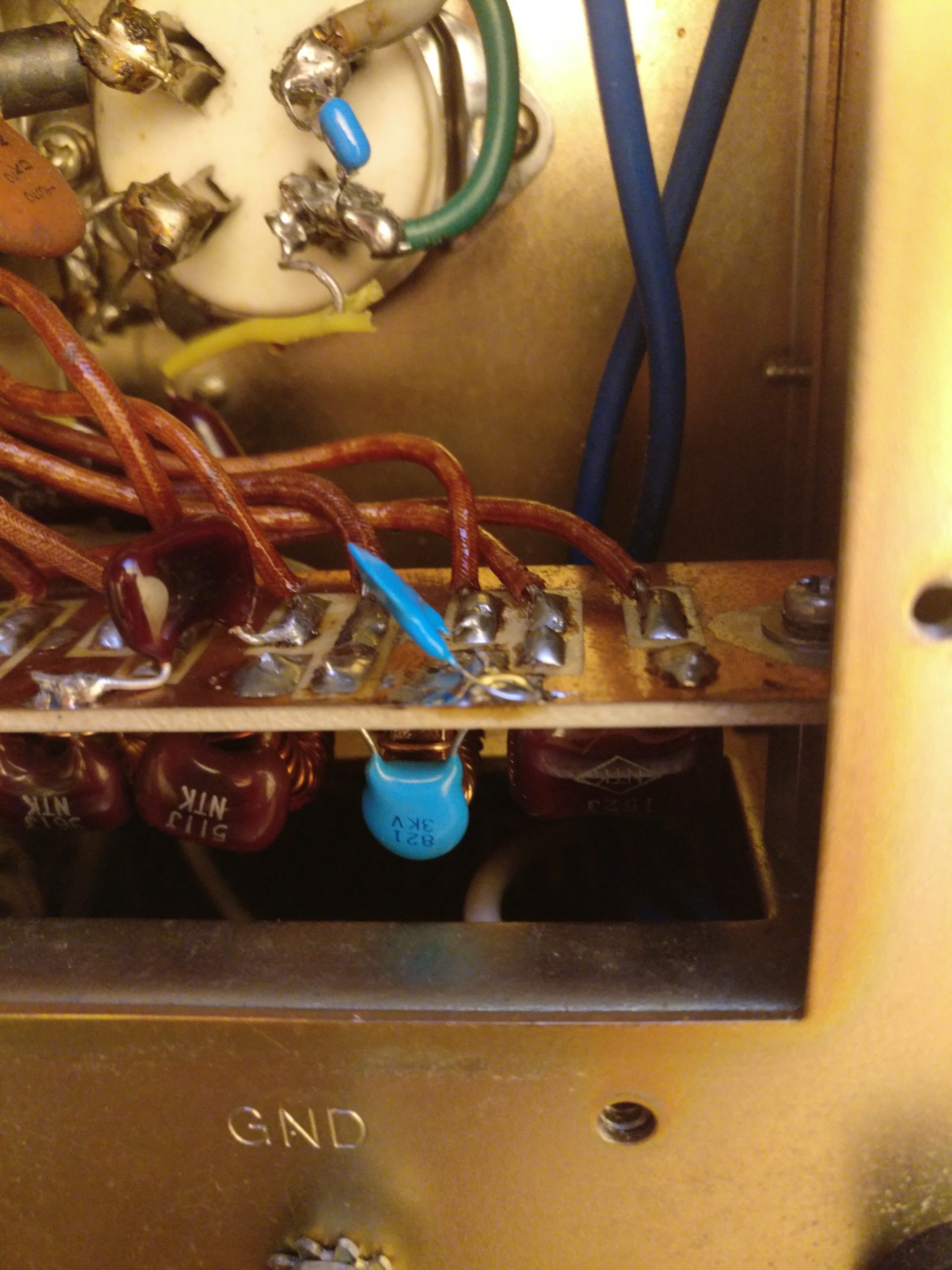
Replacement tubes (valves):
Since both tubes blew up when the amplifier failed I had to find a replacement. Looking online my only option was to either find a set of original “old” tubes or to buy a pair of new Chinese ones. I ended up buying a pair of the Chinese tubes which are branded “PSVANE 572B”. They are pretty common on AliExpress at reasonable prices. Overall these tubes seem to be well made in comparison to the original Centron tubes. The glass envelope has a similar thickness and the internal structure looks pretty much identical.
I’ve been using these tubes for a few months now and they are performing absolutely fine. Before putting them into the amplifier for the first time I ran them through the getter circuit as described by PA0FRI for about one hour each. The setup consisted of a 5V DC power supply and a DC-DC step-up converter which was set to 35V.
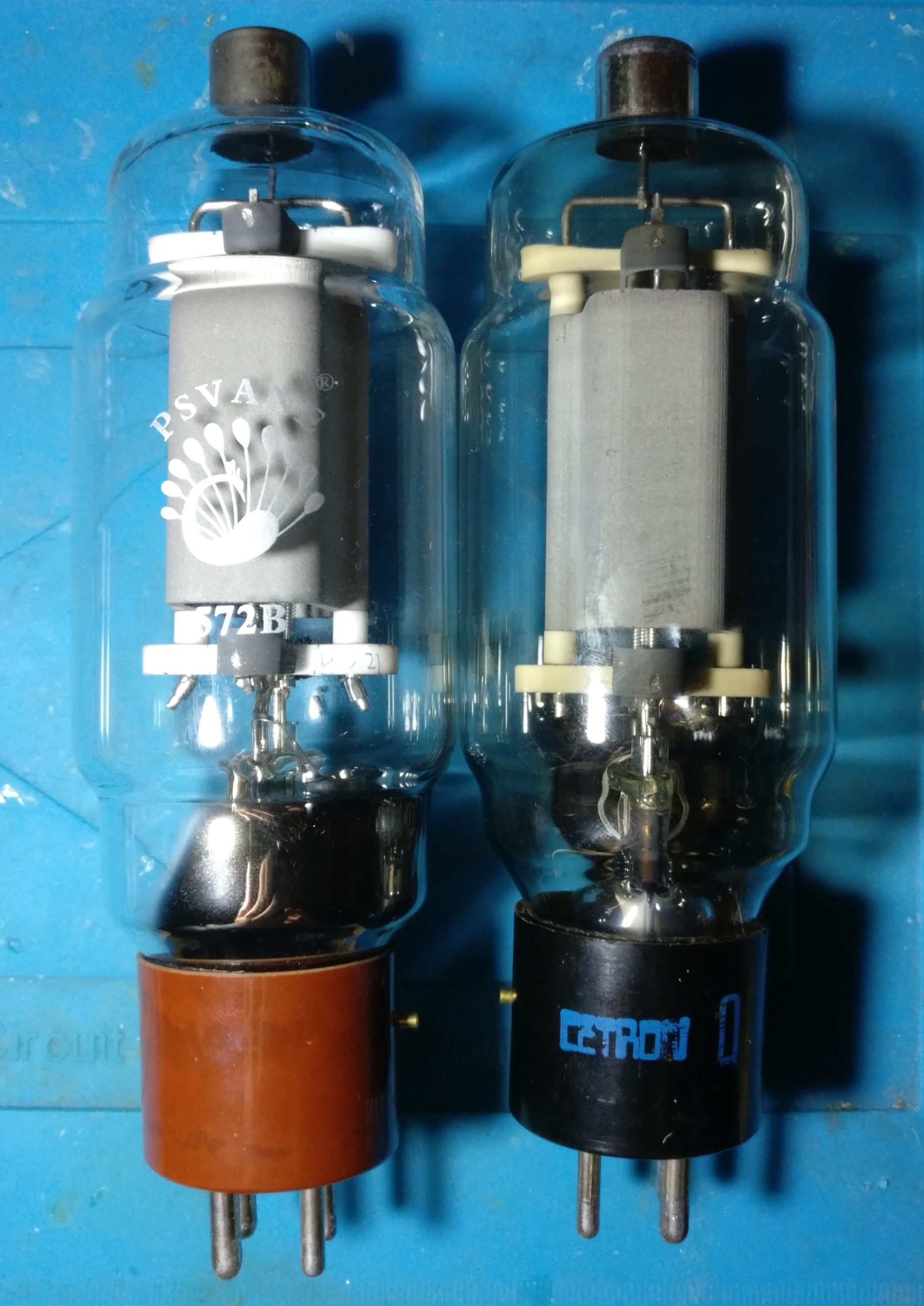
A new PSVANE 572B tube (left) next to an original Cetron 572B (right).
Modifications:
If the amplifier is not being used for a longer period of time the tubes can develop a tendency of producing a “flash-over”. In the worst case this can lead to a full destruction of the tube. To prevent this from causing too much damage I added a fuse and a glitch resistor (15 Ohms) in line with the HV supply. The amplifier is rated for a maximum plate current of 600mA which is why I decided to use a 650mA fuse. So far it has been working fine.
Update: One of the tubes must have had a flash-over when I didn’t use it for a few months. The fuse blew but luckily both tubes survived! It works!
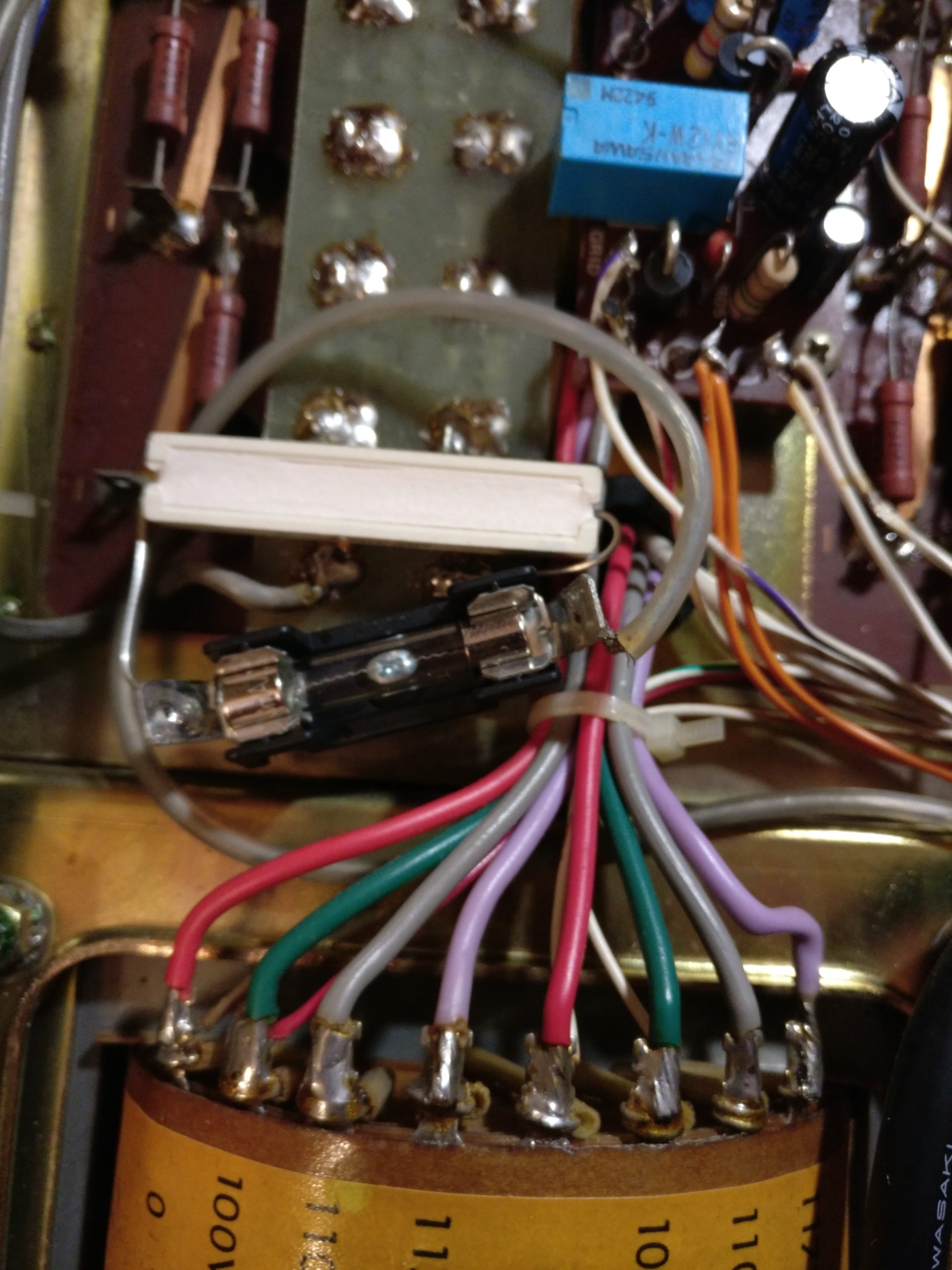
Another modification I made to the amplifier is adding some protection circuitry around the HV and current meters. That way if something goes wrong in the power supply the meters will not be damaged. Adding the protection circuits is very easy, I soldered a couple of 1N4007 diodes back to back in parallel and added a 100nF decoupling capacitor across the two. Then it’s only a matter of soldering the completed circuit across the meters as seen in the photo below.
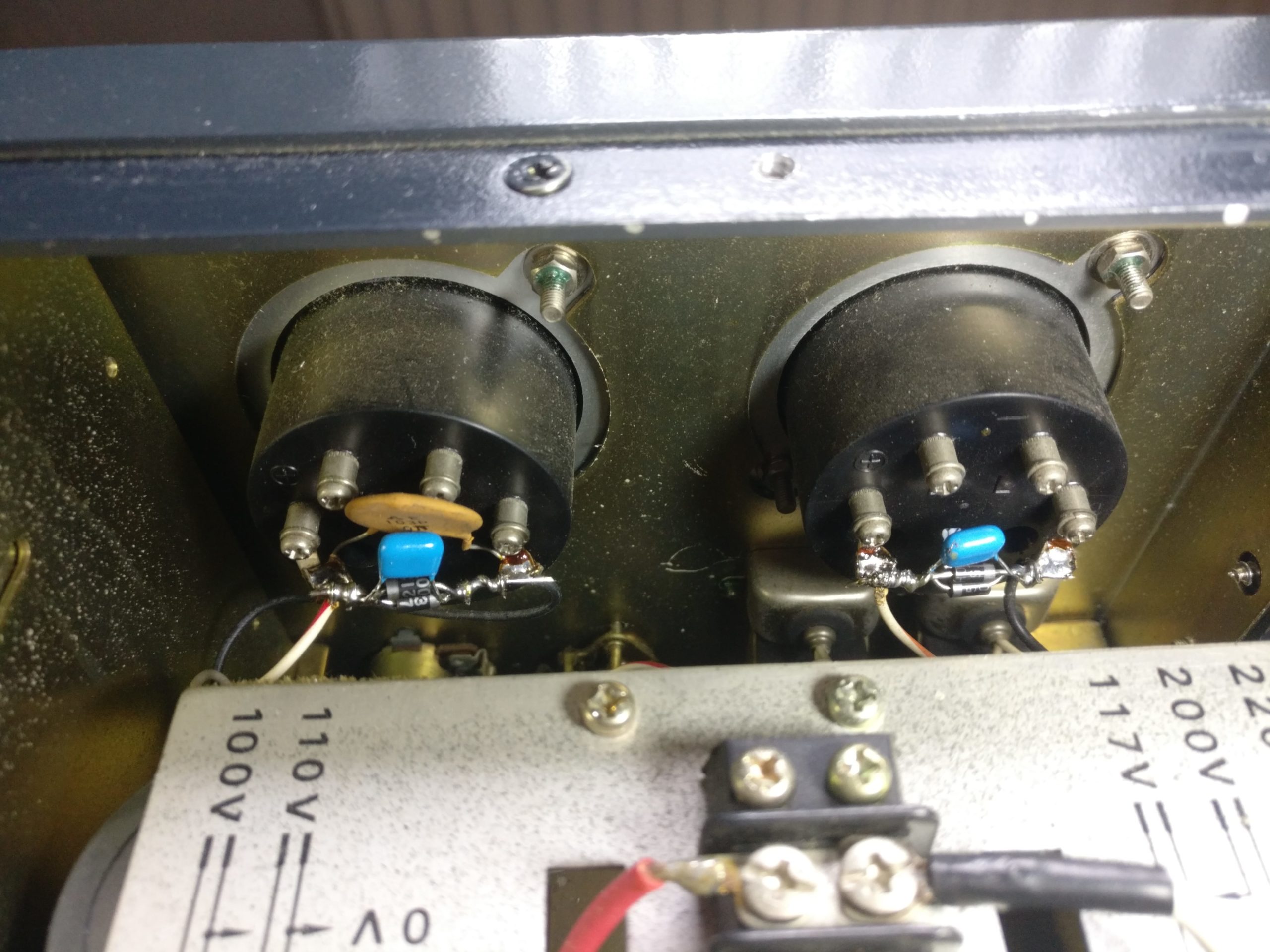
In the future I plan to add some LED lighting to the HV and plate current meters to make them more readable in the dark. I will update this page once it’s done.
I will update this page as time goes on. The amplifier is in use now and has been working pretty well. The 10m band is still very low on output power and I am not quite sure why just yet.
If you have any questions or would like to send me a message feel free to send me an email to the following address: arved(at)m0kds.com
Current update: 09/2022


